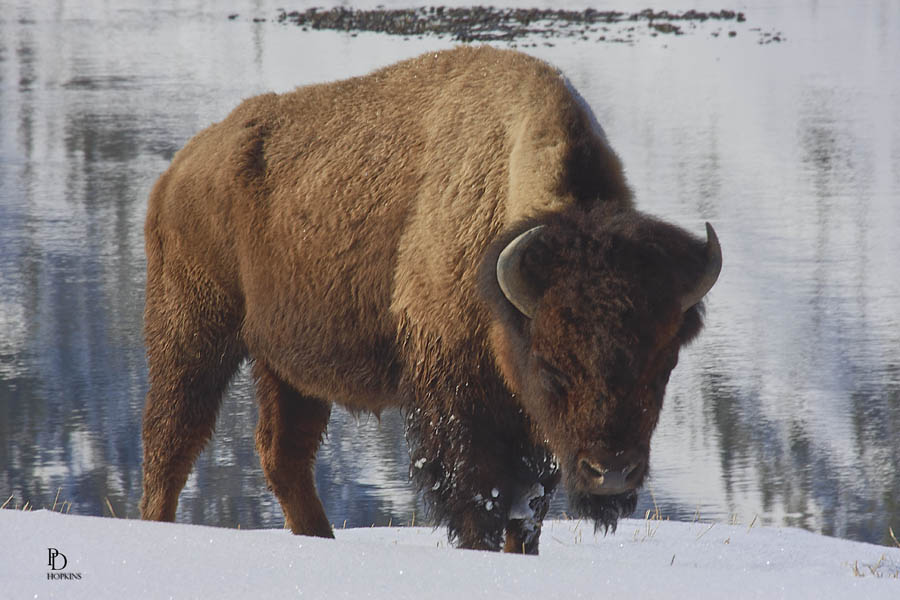Last stop on our photo road trip was Yellowstone National Park in the State of Wyoming. We were hoping to see and photograph some wildlife in addition to the great scenery. We failed to find any bears and wolves but the bison were plentiful and we soon had our quota of bison pictures. Following are some fast facts on the bison, courtesy of National Geographic’s website on animals.
American Bison Range

- Type:
- Mammal
- Diet:
- Herbivore
- Average life span in the wild:
- 12 to 20 years
- Size:
- Head and body, 7 to 11.5 ft (2.1 to 3.5 m); Tail 19.75 to 23.5 in (50 to 60 cm)
- Weight:
- 930 to 2,200 lbs (422 to 998 kg)
- Group name:
- Herd
- Did you know?
- The bison’s thick, shaggy coat is so well insulated that snow can settle on its back without melting.
- Size relative to a 6-ft (2-m) man:

We hadn’t traveled very far on our first morning at Yellowstone when we encountered our first bison of the day. There was a small herd foraging along the banks of the Madison River and were quite happy to have us photograph them. Today’s post features a single photo of a fine specimen I was able to capture early in the day. We saw many more in the course of the day and not surprisingly, they looked very much like this one. So no more pictures.

For those who would like to read a little more about the American Bison, here’s a short narrative, also courtesy of National Geographic.
Bison, symbolic animals of the Great Plains, are often mistakenly called buffaloes. By any name, they are formidable beasts and the heaviest land animals in North America. Bison stand some 5 to 6.5 feet (1.5 to 2 meters) tall at the shoulder, and can tip the scales at over a ton (907 kilograms). Despite their massive size, bison are quick on their feet. When the need arises they can run at speeds up to 40 miles (65 kilometers) an hour. They sport curved, sharp horns that may grow to be two feet (61 centimeters) long. These large grazers feed on plains grasses, herbs, shrubs, and twigs. They regurgitate their food and chew it as cud before final digestion. Females (cows) and adult males (bulls) generally live in small, separate bands and come together in very large herds during the summer mating season. Males battle for mating primacy, but such contests rarely turn dangerous. Females give birth to one calf after a nine-month pregnancy. Bison once covered the Great Plains and much of North America, and were critically important to Plains Indian societies. During the 19th century, settlers killed some 50 million bison for food, sport, and to deprive Native Americans of their most important natural asset. The once enormous herds were reduced to only a few hundred animals. Today, bison numbers have rebounded somewhat, and about 200,000 bison live on preserves and ranches where they are raised for their meat.

Thanks for the ‘virtual holiday’ Peter! Safe travels, Peter.